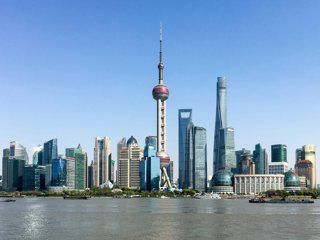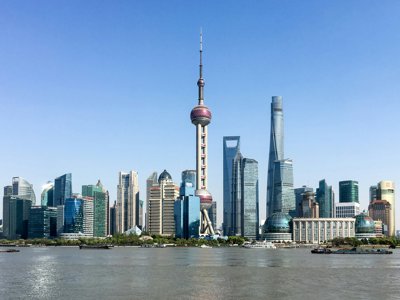What happened this week in Shanghai?
In a news story by CNN this week journalists Jessie Yeung and Serenitie Wang reported on an 85-year old school building being moved by structural engineers in the city of Shanghai, China.
A time-lapse video shows the building as it ‘walks’ to a nearby adjacent location to make way for a new commercial complex on the school’s former site.
The reason for such an extravagant level of building conservation is that city authorities want to preserve older buildings across Shanghai. There are general concerns over the changing aesthetic and skyline of this booming city. In the past, particularly during the reign of Mao Zedong (from 1966 to 1976), older buildings were actively demolished as a part of the war on the undesirable ‘Four Olds’: old customs, old culture, old habits and old ideas.

The relocation of the primary school building is a part of a wider conservation project focused on maintaining and celebrating the city’s urban geography and historic past as other brownfield plots are continually cleared for skyscrapers and modern buildings. Although ‘relentless urbanisation’ continues to pose a serious threat to the architectural heritage, Shanghai has been more successful at preservation than other Chinese cities. For example, it has saved numerous 1930s buildings in the Bund district and has successfully moved the 19th century ‘shikumen’ houses in the Xintiandi neighbourhood.
What is the urban geography of Shanghai?
Shanghai is the biggest city in China by population, with more than 25 million people living there. The city of Shanghai is located on the Yangtze river delta and is centred around the Huangpu river, on the east coast of China. The river Huangpu divides the city in half — to the west lies Puxi with Pudong to the east. Pudong has experienced rapid modernisation and houses the city’s financial district, Lujiazui, shown in Figure 1.
One of many iconic buildings in the Lujiazui financial district is the 128-storey Shanghai Tower. It is the tall curving building on the righthand side of Figure 1. The building is eco-friendly, recycles its own water and sources around 10% of its energy from 270-vertical axis wind turbines. The supertall mega-skyscraper was designed by American architectural firm Gensler who described the design as ‘the greenest super high-rise building on Earth’.
Shanghai in the twenty-first century
Chongming Island, formerly described as ‘the rice bowl’ of Shanghai, is the largest alluvial island in the world. Since 2000 the Chinese government and the Shanghai municipal government have been converting Chongming into an ʻeco-islandʼ of extensive green development. This has involved limits on urbanisation, restoration of natural wetlands, ecological tourism, environmental protection, supporting modern ecological agriculture (important as agriculture has been the foundational industry on Chongming island), water management and green industrial parks. A green building movement has also been established utilising green construction materials, low-energy consumption, natural light and ventilation, renewable energy, and wastewater reuse. Specially designed compact communities will also lower private vehicle use. The state-run Xinhua newspaper reported in 2016 that Chongming is on its way to achieve its goal to develop a world-class ecological island.
A large national flower fair called the China Flower Expo is due to take place on Chongming Island this year from 21 May to 2 July 2021. The event features a range of flora including magnolias, plum trees, orchids, chrysanthemums, bamboo, and lotus plants and will further enhance the island’s green image.
Further reading
A 5-story building in Shanghai ‘walks’ A 5-story building in China 'walks' to new location - CNN Style
26-years 26 Years of Growth: Shanghai Then and Now - The Atlantic
The skyline of Shanghai The Shanghai Skyline - Redefining ‘Iconic’ (chinahighlights.com)
BBC Bitesize Let's explore Shanghai - BBC Bitesize
Who decides how a city is going to look? Development Projects: Elite / Non-Elite Discourses – Geography Directions
The China Flower Expo Chongming Island in Shanghai chosen to host 2021 China Flower Expo - YouTube
Stress and the ecology of urban experience: Migrant mental lives in central Shanghai Transactions of the Institute of British Geographers - Wiley Online Library
